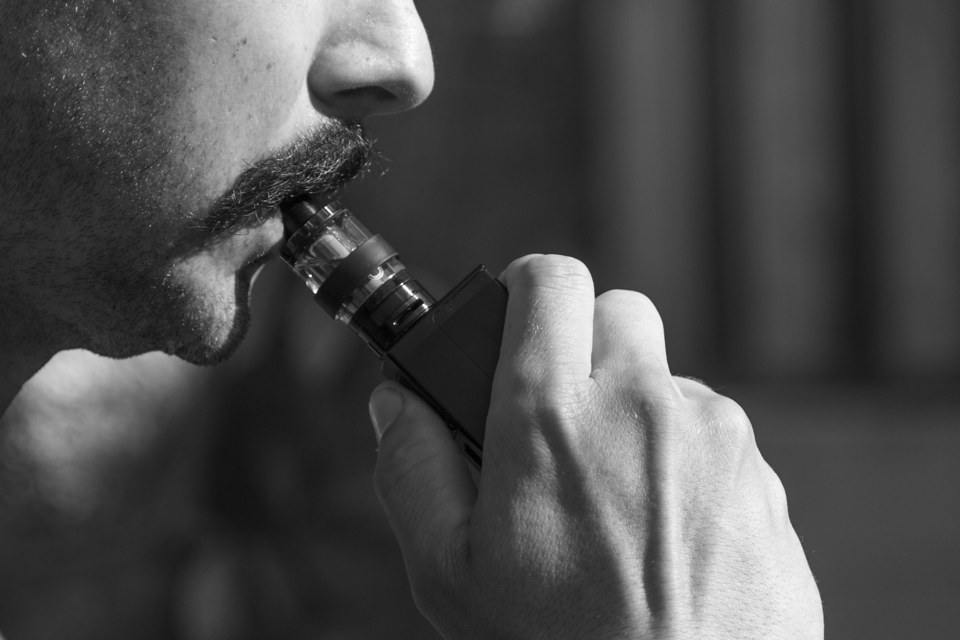 Health & Physiology
Health & Physiology
Vaping and oral health: Cloudy with a chance of disease
Almost 20 years after the invention of vaping, it is clear that it has detrimental effects on users’ health, including a higher risk of COVID19 infection. But how does vaping affect the population of beneficial bacteria that live in our mouths? Study show the effects of vaping are more severe than the effects of smoking.

In 2003, Hon Lik, a Chinese researcher patented an Electronic Nicotine Delivery System (also known as e-cigarettes), a battery-operated device that delivers a heated mixture of nicotine, glycerol (or propylene glycol), and flavor with each puff. 17 years later, these devices are available in over a hundred countries, and are used by at least 10 million ‘vapers’ daily. They are legal in many countries, touted in the media as safer than cigarettes, and claimed by consumers and the industry as helpful for quitting smoking. They also are popularly used in places where smoking is not permitted. Recently, effects of e-cigarettes on the lungs and heart have been receiving much more attention, especially due to the recent news that vapers seem to be at higher risk for being infected with the SARS-CoV2 virus.
To fully understand the effect of vaping, we must start with the mouth, where the heated aerosol is first delivered. As the gateway to the body, this is an environment that has highly specialized defense systems, one of which is a layer of beneficial bacteria that protect the mouth and prevent disease-causing bacteria from gaining a foothold in the mouth or elsewhere in the body. Until recently, the effects of vaping on this protective layer of beneficial bacteria was unknown.
To understand this effect, we recruited 125 healthy subjects. Some of them used only e-cigarettes, some only cigarettes, some neither, some used both, and one group had quit smoking to use e-cigarettes. Sampling the bacteria populations in these subjects revealed that daily e-cigarette users' mouths were teeming with potent infection-causing organisms that put them at substantial risk for ailments ranging from gum disease to cancer. The profile of the bacteria in vapers' mouths resembled that of individuals with advanced gum disease, even though they were clinically healthy. The damaging effects were seen with or without nicotine, leading us to believe that the heated and pressurized liquids in e-cigarette cartridges are likely the key culprit in transforming vapers' mouths into a welcoming home for a dangerous combination of microbes. We also found that vaping creates a lot of stress in the beneficial bacteria population, causing them to cloak themselves in layers of slime, which then makes them unrecognizable to the body as friends. This was accompanied by higher levels of inflammatory signals in vapers' mouths, which exponentially increases the likelihood for disease.
In addition, we used a "fake mouth" to validate what we had found in the human participants. We created conditions simulating normal oral bacteria in artificial saliva and introduced a vape cloud or clean air to the fake mouth.
The harmful effects of vaping begin in the mouth, and can be measured within six months of using e-cigarettes. These effects not only increase the risk for many oral diseases, but can potentially impact the rest of the body due to harmful bacteria and inflammatory molecules that can be released into the bloodstream on a daily basis. Our results show the effects of vaping are more severe than the effects of smoking, thus quitting smoking to start vaping is not a change towards a healthier lifestyle.
Original Article:
Ganesan, S. M. et al. Adverse effects of electronic cigarettes on the disease-naive oral microbiome. Sci. Adv. 6, (2020).
Next read: Symbiogenesis: how algae and bacteria shaped new genes together by Raphaël Méheust , Eric Bapteste
Edited by:
Dr. Ayala Sela , Associate Editor
We thought you might like
How humans gave acne to the grapevine
Feb 28, 2015 in Evolution & Behaviour | 3.5 min read by Carlos J. Rivera-RiveraTara Oceans Expedition sequences the ocean
Nov 24, 2015 in Earth & Space | 4 min read by Chris BowlerLiving without mitochondria: the downfall of one textbook truth
Oct 3, 2016 in Evolution & Behaviour | 3.5 min read by Lukáš NovákAmoebas trap bacteria using nets of DNA: the same mechanism as human immune cells
Jan 27, 2017 in Evolution & Behaviour | 3.5 min read by Lukáš NovákMore from Health & Physiology
Tobacco smoking and other exposures shut off cancer-fighting genes
Aug 31, 2024 in Health & Physiology | 3 min read by Jüri Reimand , Nina AdlerA hidden clock that times cytoplasmic divisions
Aug 30, 2024 in Health & Physiology | 3 min read by Cindy OwWhen two kinases go for a dance
Aug 2, 2024 in Health & Physiology | 4 min read by Ioannis Galdadas , Francesco Luigi Gervasio , Pauline JuyouxAwakening the thymus to cure SARS-CoV-2 infection: a matter of genes
Jul 27, 2024 in Health & Physiology | 3.5 min read by Stefano Marullo , Cheynier RemiKeeping the balance: How epigenetics monitors cancer genes
May 13, 2024 in Health & Physiology | 4 min read by Zach Gray , Madison Honer , Johnathan WhetstineEditor's picks
Trending now
Popular topics


